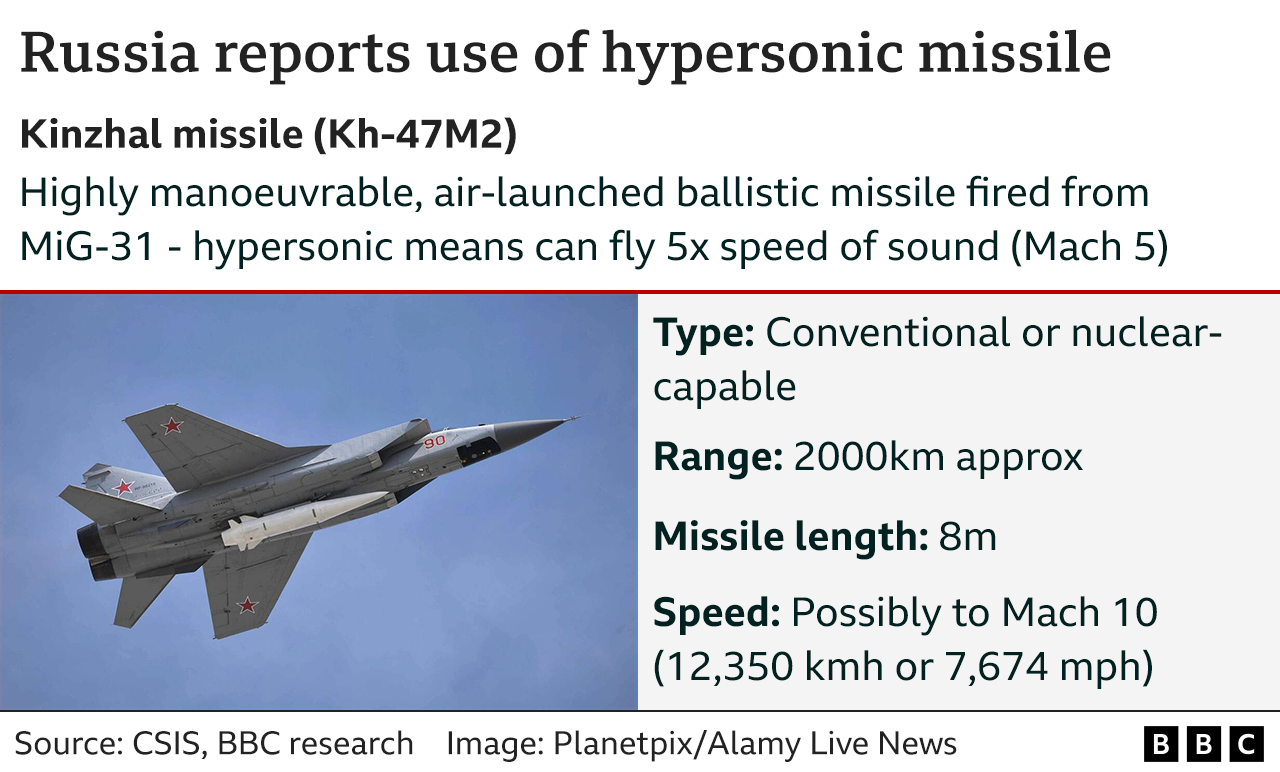General Discussion
Showing Original Post only (View all)Putin's Hypersonic Missiles Should be Announced by the West As Escalation [View all]
Russia's missiles are unseeable, unstoppable, and nuclear capable. That right there is escalation. Of course, the idea is that the West has to cower in fear at this spectre of nuclear annihilation. Putin gives the likely story that he only developed these weapons because the West forced him to, because the US withdrew from the Anti Ballistic Missile Treaty in 2002. The US is third in hypersonic missiles, behind Russia and China.
Perhaps this is the pivot point of support for Russia by China. In that sense, their pincer formation could become stronger. Could they both strike? Yes. But in the economic sense, the cost to China of supporting Russia is not really worth China's short and long term economic weakening.
This is just the Zircon...
The missile flies with an advanced fuel that the Russians say gives it a range of up to 1,000 kilometers. And it's so fast that the air pressure in front of the weapon forms a plasma cloud as it moves, absorbing radio waves and making it practically invisible to active radar systems.
U.S. Aegis missile interceptor systems require 8-10 seconds of reaction time to intercept incoming attacks. In those 8-10 seconds, the Russian Zircon missiles will already have traveled 20 kilometers, and the interceptor missiles do not fly fast enough to catch up.
According to Popular Mechanics, even if a U.S. ship were to detect a Zircon missile from 100 miles away, it would have only one minute to do something about it.
In order to intercept a Russian Zircon missile, the U.S. would either need to intercept it at launch or fly an object into its path.
Russia's shift to hypersonic weapons is likely a means of contending with American superiority in size, technology and sheer number of aircraft carriers. The U.S. Navy intends to maintain a force of 12 nuclear-powered aircraft carriers.
By contrast, Russia has one -- and it deploys with a tugboat in case its engine breaks down.
While at sea, any of Russia's 15 Buyan-class corvettes will be able to carry up to 25 Zircon hypersonic missiles. It would take fewer than a half-dozen of those missiles to sink even the most advanced American aircraft carrier, such as the USS Gerald R. Ford.
Some say that innovations like the Zircon are moving the development of military technology away from aircraft carrier-based systems, calling for the U.S. Navy to reconsider the role of the carrier entirely.
Now for the nuclear capable Kinshal hypersonic ...

Rumours in early February 2022 suggested that several MiG-31 interceptors armed with Kinzhal missiles were dispatched from Soltsy Air Base, Novgorod Oblast, to Chernyakhovsk Naval Air Base in Russia's western Kaliningrad exclave.[34][35][36][37] Russia's Aerospace Force launched Kinzhal hypersonic aeroballistic missiles on 19 February 2022.[38]
During the invasion of Ukraine in 2022, the missile was reportedly used for the first time in combat. The Russian military said that it used Kinzhal missiles to destroy an underground weapons depot of the Ukrainian armed forces in Deliatyn on 18 March 2022.[39][40]
And then there is the Avangard (hypersonic glide vehicle)
The Avangard is one of the six new Russian strategic weapons unveiled by Russian President Vladimir Putin on 1 March 2018.
China and Russia know that if they hit anywhere beyond Ukraine, they'd best get ready.